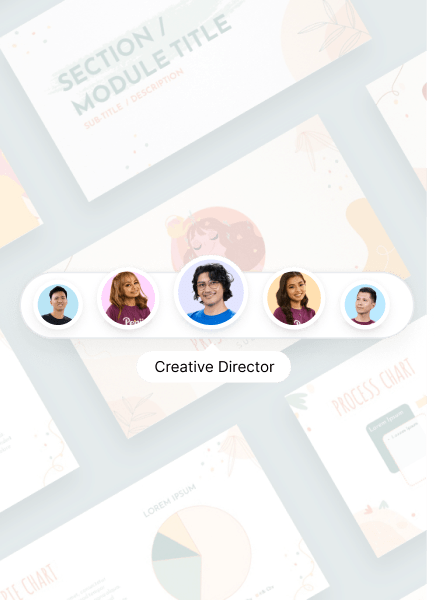
Did you know that people are 30 times more likely to read an infographic than a text article?
Brand infographics are not just visually appealing; they are a strategic asset that can enhance your brand’s storytelling, engagement, and overall communication effectiveness.
In this article, we’ll discuss the essence of brand infographics, exploring their benefits, creation process, and design tips. Additionally, we’ll answer some common questions about brand infographics and offer practical insights on how to maximize their potential for your brand.
What Is a Brand Infographic?
A brand infographic is a visual representation of information, data, or knowledge intended to present complex information quickly and clearly. Unlike regular infographics, brand infographics are specifically designed to align with a company’s brand identity, including its colors, fonts, and overall style.
Often a part of graphic design services, these materials effectively combine text, images, and design elements to convey a cohesive and engaging story that reflects the brand’s voice and values.
For instance, education tech company Course Hero offers literature infographics, offering a visual way to learn about books’ characters, themes, authors, and literary devices:
Though the platform’s literature brand infographics don’t follow a rigid color palette or layout format, the design packages use the same text and illustration style, making them instantly recognizable. This consistent visual approach helps to reinforce Course Hero’s brand identity, making their educational content not only informative but also engaging and memorable for their audience.
Benefits of Brand Infographics
Here are a few advantages of brand infographics and how they can help your brand:
Engagement
Brand infographics significantly boost audience engagement. Visual content is processed 60,000 times faster than text, making infographics a powerful tool for capturing attention. According to a study by Skyward, content with relevant images gets 94% more views than content without images.
Retention
Infographics enhance information retention. As noted by John Medina, a molecular biologist and the author of Brain Rules, people remember 65% of information when it is paired with a relevant image, compared to only 10% when they hear it. This makes infographics an effective way to ensure your message sticks with your audience.
Sharing
Infographics are highly shareable, which amplifies their reach. A study shows that infographics are shared and liked on social media three times more often than any other type of content. This shareability not only increases the visibility of your content but also enhances your brand’s social media presence.
SEO Benefits
Including infographics in your content strategy can improve your SEO. Infographics generate more backlinks than other types of content. Research indicates that well-designed infographics can increase web traffic by up to 12%. This boost in traffic and backlinks can positively impact your website’s search engine rankings.
How to Create a Brand Infographic
Here’s a comprehensive guide to help you through the process of creating a brand infographic:
1. Define Your Objective
Determine the primary goal of your infographic. Are you aiming to educate, inform, persuade, or entertain your audience?
Alongside defining your goals, pinpoint who your target audience is and what type of information will resonate with them. For example, this infographic from Imperva provides information on how a cybercriminal may have access to one’s data:
The infographic was designed for someone who wants to learn more about protecting themselves from cybercrimes like phishing and malware.
2. Conduct Thorough Research
Collect relevant data and information from credible sources. Make sure the data is accurate and up-to-date. Organize your data logically, focusing on the most important points you want to convey.
This infographic from Northeastern University D’Amore-McKim School of Business, for instance, offers data in a logical manner. As a result, the infographic doesn’t look noisy and cluttered despite being loaded with data.
3. Create a Rough Outline
Plan the structure of your infographic, including the introduction, main content sections, and conclusion. Ensure there is a logical flow of information, making it easy for viewers to follow and understand.
4. Design the Infographic
Design your visual and use your brand’s colors, fonts, and design elements to ensure consistency. Highlight the most important information through size, color, and placement.
Incorporate icons, graphics, and images to make the information visually appealing and easier to understand. In addition, you can also use charts and graphs to represent data visually, making complex information more digestible.
If you want to save time and ensure a high-quality design, get Penji’s on-demand graphic design service. Our expert designers can create consistent and professional brand infographics tailored to your needs, saving you time and boosting results for your brand.
Brand Infographic Design Tips
Creating an effective brand infographic requires careful planning and attention to design details. Here are some essential tips to help you craft impactful infographics:
- Maintain Brand Consistency. Stick to your brand’s color palette to reinforce brand identity and make your infographics instantly recognizable. In addition, utilize your brand’s typography to ensure uniformity across all marketing materials. It’s also a great idea to Include your logo in a subtle yet noticeable location to ensure brand visibility.
- Keep It Simple. Use concise text to convey your message. Let the visuals do most of the talking. That said, you need to avoid clutter by using clear and straightforward graphics. Each element should serve a purpose. It also pays to utilize whitespace effectively to give your design room to breathe and to enhance readability.
- Highlight Key Points. Use size, color, and placement to emphasize the most important information. Arrange information logically to guide the viewer’s eye from one section to the next.
Frequently Asked Questions (FAQs)
Here are a few frequently asked questions about brand infographics:
What is a company infographic?
A company infographic is a visual representation of data and information related to a business, designed to communicate complex concepts quickly and clearly while aligning with the company’s branding. It effectively combines text, images, and design elements to engage and inform the audience about various aspects of the company.
What is the purpose of an infographic?
The purpose of an infographic is to simplify and visually present complex information, making it easier for the audience to understand and remember key points. Infographics aim to engage viewers, enhance information retention, and communicate messages quickly and effectively.
Want brand infographics that work? View a demo today and learn how Penji can offer a hassle-free solution for all your design needs.
About the author

Carla Deña
Carla is a journalist and content writer who produces stories for both digital and legacy media. She is passionate about creativity, innovation, and helping small businesses explore solutions that drive growth and social impact.













